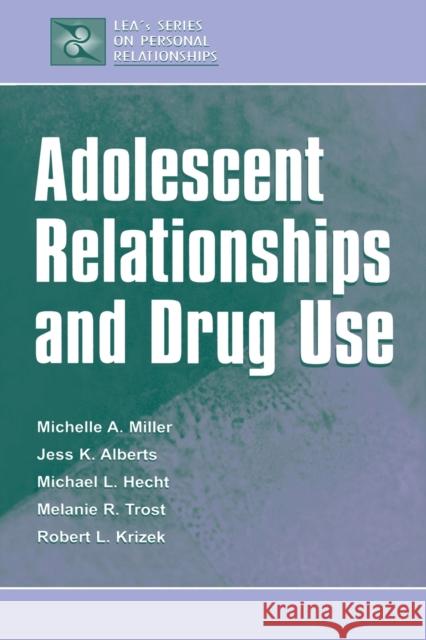Adolescent Relationships and Drug Use » książka
Adolescent Relationships and Drug Use
ISBN-13: 9780805834369 / Angielski / Miękka / 2000 / 248 str.
Adolescent Relationships and Drug Use
ISBN-13: 9780805834369 / Angielski / Miękka / 2000 / 248 str.
(netto: 157,90 VAT: 5%)
Najniższa cena z 30 dni: 105,05
ok. 22 dni roboczych
Dostawa w 2026 r.
Darmowa dostawa!
This text describes the communicative and relational features of adolescent drug use. It is written for people who care about adolescents and are concerned about their drug use problems: researchers, practitioners, parents and teachers, among others. It informs the reader about how drugs, adolescents and the social world (a world of peer pressure, emerging and fragile self-identity, need for approval, desire to be accepted, cliques, identification with peers and peer norms) affect an adolescent's relationship with his/her parents.
Adolescent Relationships and Drug Use explores the communicative and relational features of adolescent drug use. It focuses on peer norms, risk, and protective factors and considers how drugs are offered to adolescents, examining such factors as who makes the offers and how they are resisted, where the offers take place, and what relationship exists between the persons making the offers and the persons receiving them. Unlike other studies of drug resistance, this work examines the communication processes that affect adolescents' ability to effectively resist drug offers. Michelle Miller and her colleagues study how personal qualities, communication skills, and relationships with others affect an individual's ability to resist offers of drugs.
This volume provides a detailed analysis of drug resistance in the context of such factors as relationships, types of drugs, family and peer group relationships, personality, and situations. It places drug use and resistance in a living, relational context, and offers the first comprehensive communication and relational approach to drug resistance. The authors argue for the development of a relational and communication competence model of drug resistance, and suggest unique approaches for future drug prevention efforts.
In describing the social and relational processes of drug resistance and then linking intervention techniques to the adolescents' relational world, this work makes a major contribution toward understanding drug use among adolescents. It informs relationship, communication, and psychology research, assists drug and health research by presenting new ways of considering the issue, and enlightens drug resistance practice by demonstrating a new approach to prevention. As such, it makes an effective and invaluable contribution to the ongoing efforts to reduce drug use among adolescents.











